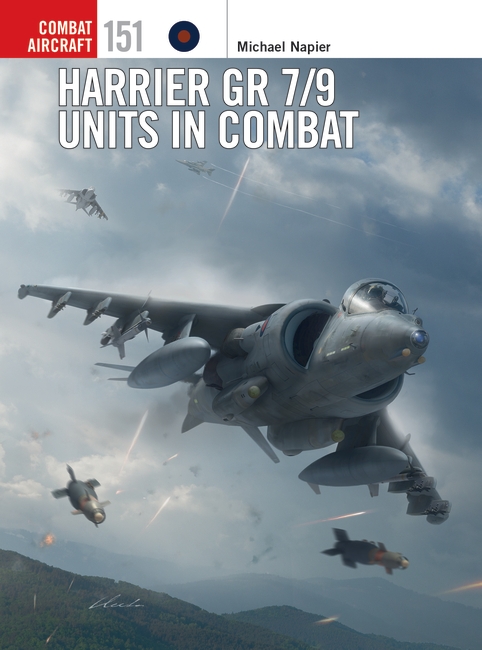
I have to admit that, when I was approached to write a book about the Harrier GR7 ‘in action’, it made me face all my prejudices as an ex-Tornado pilot. Firstly, I thought that the Harrier had done very little real operational work and, secondly, I suspected that the ‘Harrier Mafia’ would be unwilling to help a non-Harrier pilot write their history. But I’m delighted to report that I was completely wrong on both counts: the Harrier GR7 saw almost continuous active operations over Iraq, the Balkans and Afghanistan between 1993 and 2010 and the Harrier pilots that I approached could not have been more helpful. Harrier GR7/9 Units in Combat is, I believe, the first book to describe all the operational detachments and deployments of the Harrier GR7/9 in detail, and it includes many first-hand accounts from Harrier pilots involved in the action.
Despite its being optimised for night-time, low-level ground attack, the Harrier GR7’s operational debut was in the daytime reconnaissance role over northern Iraq. Harrier squadrons assumed responsibility for the surveillance of Iraqi forces under the northern No Fly Zone (NFZ) north of the 36th Parallel until 1995. Six Harriers also deployed to Belize in September 1993 as a demonstration of continued British commitment to the security of the country, both to the Belizeans and also Guatemala, which had, in the past, threatened to invade Belize.
RAF Harriers took part in offensive action during NATO operations Deliberate Force over Bosnia-Herzegovina in 1995 and Allied Force over Kosovo four years later. Deliberate Force saw Harrier GR7s – armed with laser-guided bombs (LGB) – working with Jaguars – equipped with laser designation pods – to attack important targets during a short campaign that ultimately led to the end of the war in Bosnia. By the time that they saw further action over Kosovo, the Harrier GR7 force had become adept at laser self-designation of targets and flew 870 operational sorties over Kosovo between March and June 1999. The campaign was not without its challenges and Harrier pilots often had to deal with atrocious weather as well as Serbian air defences.
From its outset, the Harrier GR7 force was capable of operating from Royal Navy Invincible-class aircraft carriers. Operational deployments on these ships included the Balkans in 1997, the Persian Gulf (and Iraq) in 1997–98 and Sierra Leone in 1991. When the Sea Harrier was withdrawn from service in 2006, 800 Naval Air Squadron, later retitled Naval Strike Wing, re-equipped with the Harrier GR7.
The Harrier GR7 played an important part in the Iraq War of 2003, during which a Harrier detachment operating from Jordan carried out anti-SCUD operations. Meanwhile, another detachment flying from Kuwait fulfilled the Close Air Support and Interdiction roles, directly supporting the advance of Coalition land forces deep into Iraq. Between them, the two Harrier detachments completed nearly 700 operational missions during the conflict, dropping LGBs and firing AGM-65 Maverick missiles.
The longest operational deployment by the Harrier force followed soon afterwards when the aircraft were sent to Afghanistan. Harriers operated from Kandahar from 2003 until they were replaced in theatre by Tornado GR4s in the summer of 2009. After a relatively quiet start to the commitment in Afghanistan, the pace of operations ramped up dramatically in 2006 with the start of the Taliban insurgency and the employment of LGBs and CRV 7 rockets became almost routine. The arrival of the upgraded Harrier GR9 in 2007 brought new weapons and capabilities. Sadly, the aircraft was withdrawn from service at the height of its operational capability – a decision which was based on short-term finance rather than coherent strategy, and one that understandably still rankles in the ex-Harrier world.
As well as describing the events of 1993 to 2010, Harrier GR7/9 Units in Combat contains many never-before-published photographs of the aircraft, as well as 24 profiles depicting Harriers as they were configured during the various operations, making it a uniquely important volume for anyone with an interest in the Harrier or British participation in the conflicts in Iraq, the Balkans and Afghanistan.

Comments
You must be logged in to comment on this post. Click here to log in.
Submit your comment